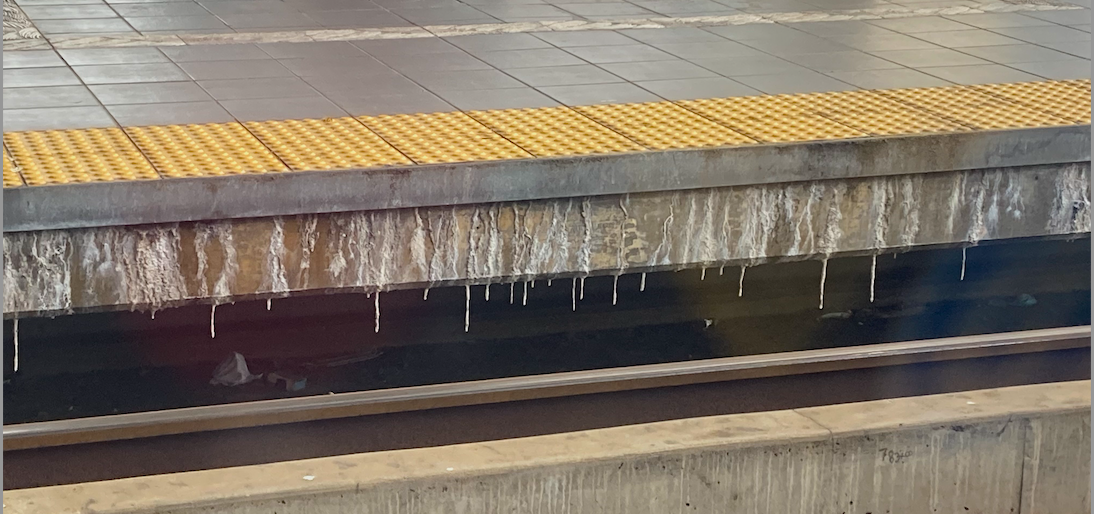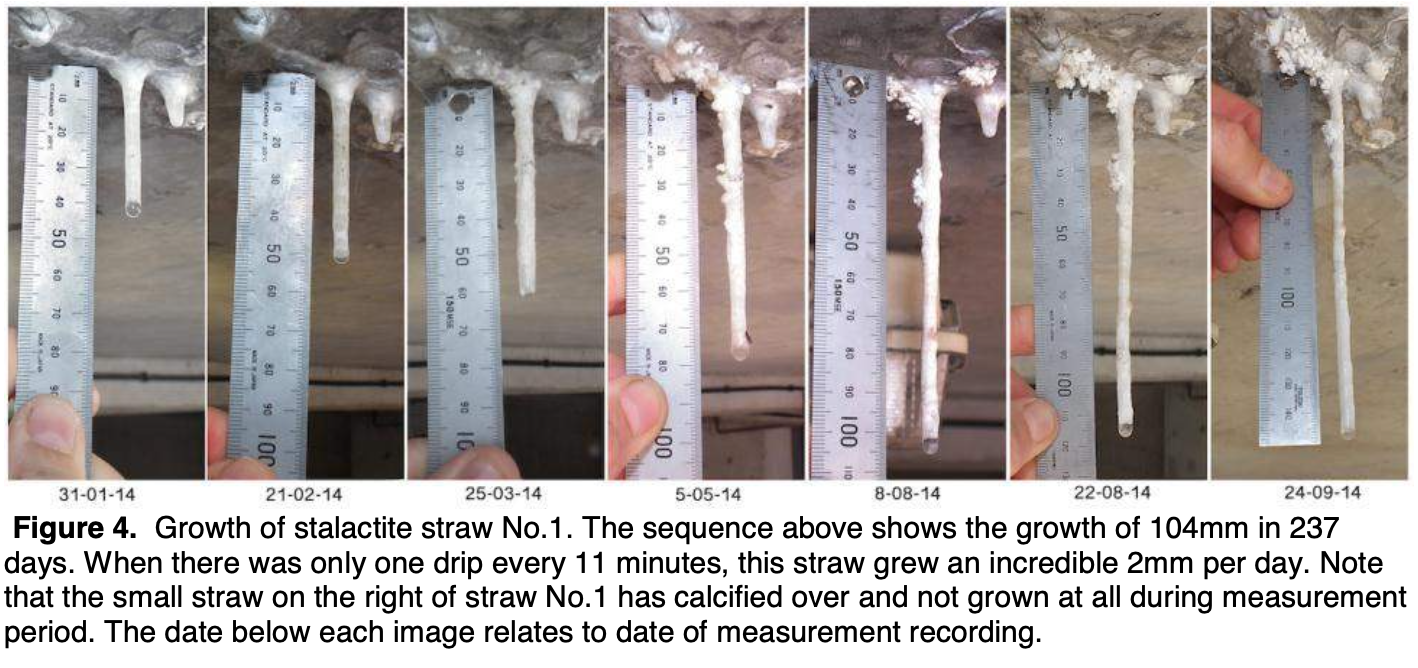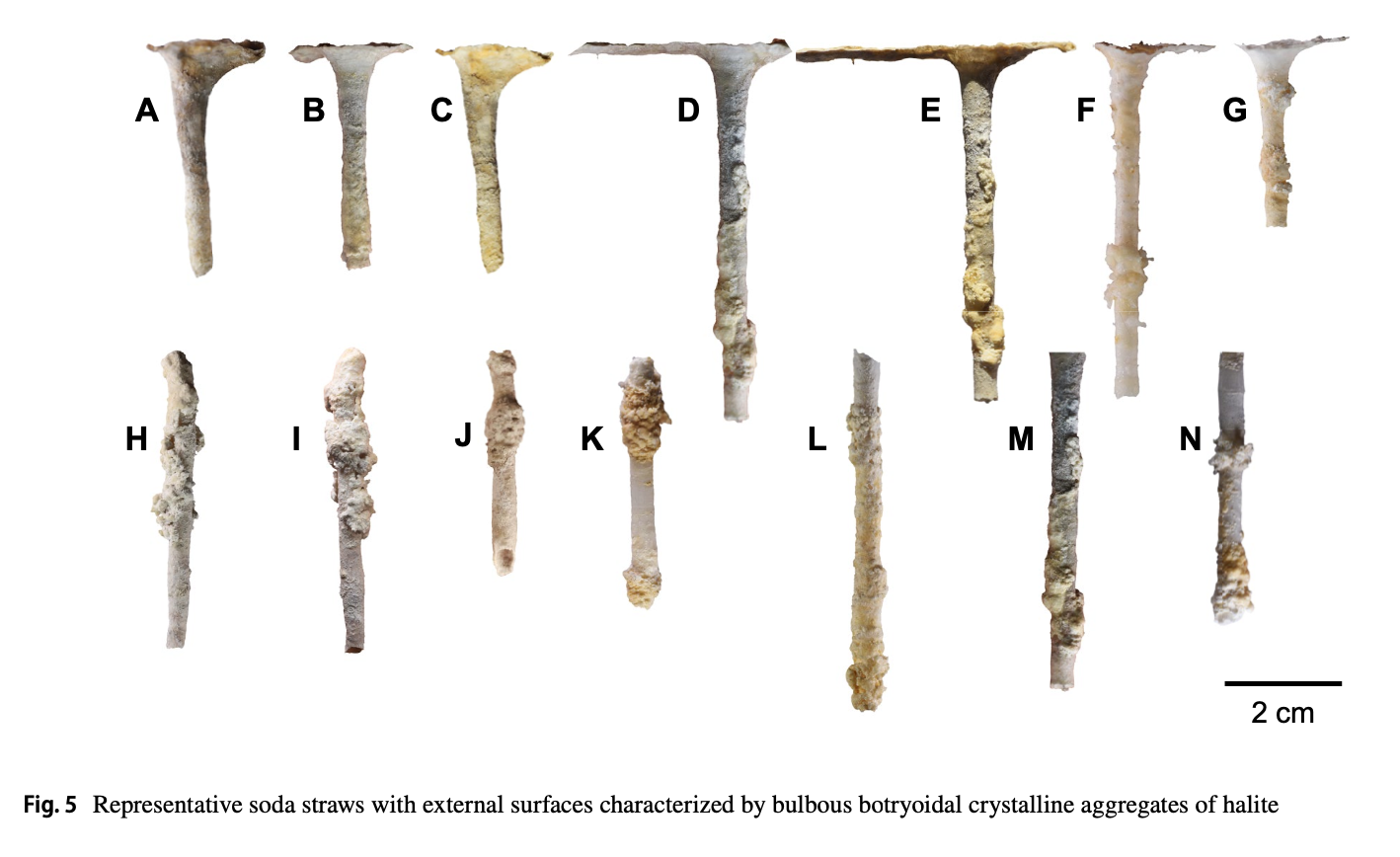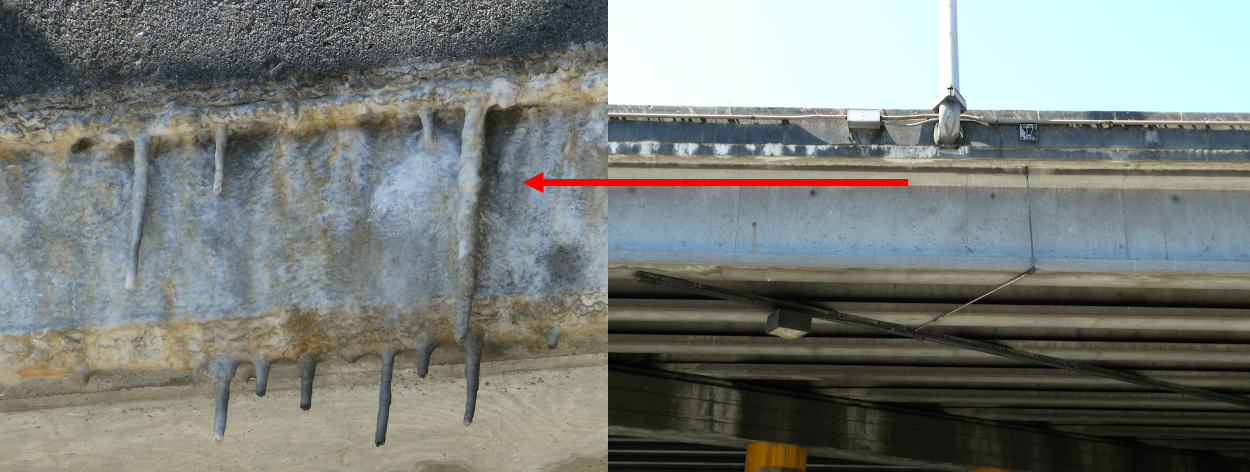Greetings. I had hoped to keep this page updated with my newsletter but clearly I haven’t. The best way to stay up to date is to subscribe to my Street Smart Newsletter.
Thanks kindly.
Greetings. I had hoped to keep this page updated with my newsletter but clearly I haven’t. The best way to stay up to date is to subscribe to my Street Smart Newsletter.
Thanks kindly.
Last week I wrote about looking down. This week I want to write about looking up, though my first example is of looking slightly down and across.
Riding Light Rail the other day, I noticed a curious geological feature at the Tukwila Station. Hanging down from the platform were stalactites, those classic cave structures. The urban ones in Tukwila were a half inch to several inches long and resembled soda straws, another term for them. They are also known as neoformations and calthemites (for the Latin calx, meaning lime; the Latin théma, meaning deposit; and the Latin -ita, a suffix indicting a rock or mineral) and are wide-spread across urban landscapes.
The key to their formation is the weathering of concrete. As I noted in a previous newsletter about lime kilns, concrete consists of cement (lime) and an aggregate. When water penetrates the concrete and seeps along fractures, it can pick up and carry calcium hydroxide. If the water reaches a surface in contact with air, the calcium hydroxide mixes with atmospheric carbon dioxide and leads to the formation of urban stalactites made of calcium carbonate, also known as the mineral calcite, and by the way, the second ingredient in Tums, after sugar.
For those who are interested, here’s the equation. From Garry K. Smith, Calcite Straw Stalactites Growing from Concrete Structures, one of the best papers on the subject. One point of caution, the solution that forms is very alkaline (pH13) and will burn your eyes or skin.
Water in concrete, particularly where calthemites form, comes from precipitation, gutters that leak, air conditioners, sewer pipes, and the like, says Garry K. Smith, an Australian caver and expert on calthemites. He found that soda straw growth depends on drip rate with maximum growth (2 mm/day) occurring when there are 11 minutes between drips. That growth rate is up to 360 times faster than occurs in caves. The longest calthemites are up to a meter long but most are less than eight inches. Smith told me that if the rate is too fast, on the order of 1 drip/minute, no stalactite forms though a stalagmite may develop below the drip. 
Image also from Garry’s paper, listed above.
Calthemites are quite varied in texture and color, though most are white to taupe. The different hues result from metals encountered by the water during its travels through the concrete. Copper pipes lead to shades of green and blue and iron pipes impart orangish-reds. Halite (table salt) can also affect calthemites but mostly in the surface topography. If left undisturbed, urban stalactites can last forever, says Smith, though they are hollow and could break due to wind or being bumped by a person or beast. He notes that another problem is that the alkaline, or basic, chemistry of the drip can damage car paint, which would probably trigger removal, or at least staunching water movement.
From: Paul L. Boughton, “Morphogenesis and Microstructure of concrete-derived calthemites,” Environmental Earth Science (2020) 79:245.
In Seattle, calthemites form in a variety of locations, including tunnels, overpasses, the undersides of bridges, parking garages, and basements. (With all of the graffiti covering these types of locations, they’re sort of like our own small scale modern Chauvet Cave.) The key, as noted above, is concrete, as well as water. As we Seattleites try to deal with this summer’s heat wave, what could be better than exploring for urban stalactites in a dark place, underground or under a big concrete structure? Have fun.
Calthemites under I-5 where it crosses over Weedin Place. Longest stalactite looks to be about 6-7 inches.
I would like to thank Garry K. Smith, who provided helpful information and who has written about calthemites here and here.
Please let me know if you know of/find any of these splendid little formations.
If you’d like to subscribe to my newsletter (either free or paid), here’s a link.